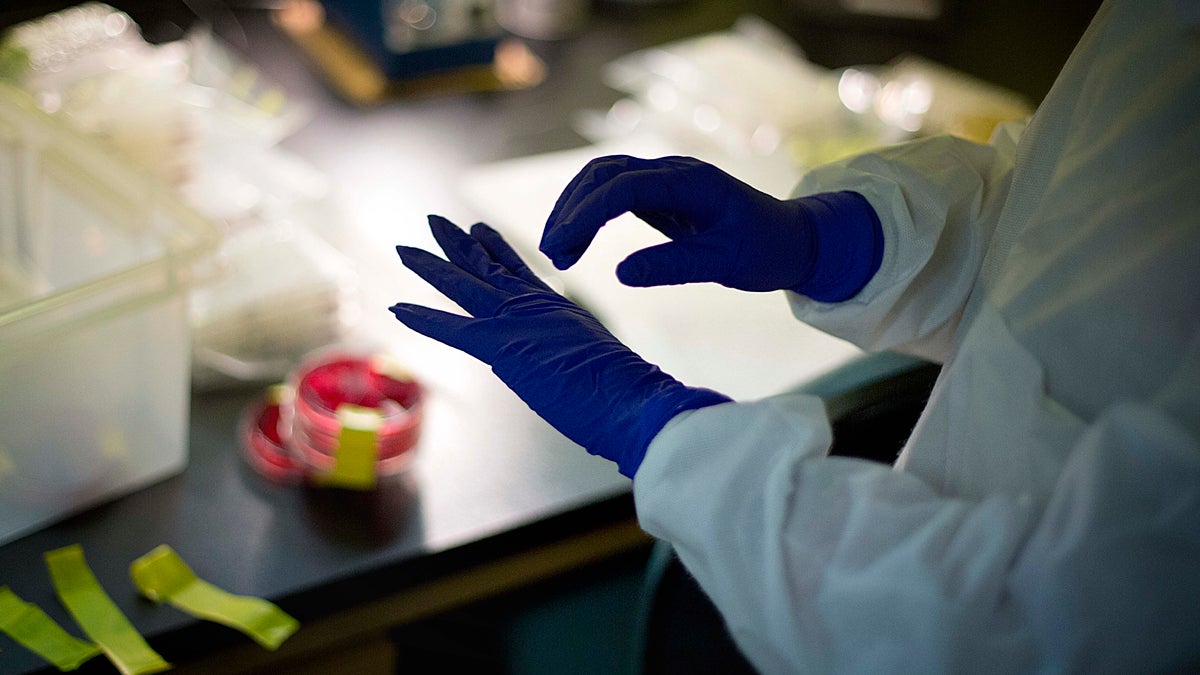Top science stories of the week: Lab safety snafus, feathered dinosaurs and genetic pacemakers
Listen
(AP Photo/David Goldman)
The Scientist’s Kerry Grens updates us on hazardous mishaps at government labs, genetic pacemakers in pigs and flying dinosaurs.
In this week’s science recap, The Scientist’s Kerry Grens joins us to talk about a new dinosaur species identified in China, genetic pacemaker testing in pigs and the latest on hazardous biomaterial transfers at government labs.
It’s long been thought that dinosaurs didn’t have the ability to fly, but many believe that birds descended from dinosaurs and flight was something birds came up with. But this week, scientists reported that a new dinosaur species, identified from a fossil in China and named Changyuraptor yangi, was completely covered in feathers, raising the question of whether or not this animal actually flew like a bird.
“[Scientists] think it might represent the earlier part of the evolution of flight. Perhaps it wasn’t an invention of the birds, but came earlier,” said Grens. “It might help understand how flight came to be.”
The newly discovered species is the largest known flying dinosaur at four-feet long.
Genetic pacemakers
Many people get electronic pacemakers implanted in their hearts to keep cardiac rhythms at the right pace, but scientists are now developing something called a cellular pacemaker, which could create those pacemaker cells from someone’s own body. Researchers recently injected pig hearts with a gene that converted their heart muscle cells into pacemaker cells. All of the pigs tested had a heart condition and the scientists found that these particular cells kept the heart rate up and allowed the pigs to be less dependent on a pacemaker implant.
“This could perhaps be a bridge therapy for people who have to have their pacemaker removed,” said Grens. “Say if they got an infection; you may have to take it out for a couple weeks, let the tissue heal, take some antibiotics and maybe you could have this gene therapy work.”
The experiment was a two-week long study so there’s no clear indication of how these genetic pacemakers would work in a permanent capacity, but this could provide hope in the future for patients looking for a temporary fix while an electronic pacemaker is being fixed or replaced.
Lab safety snafus
Last week, vials of Small Pox dating back to the 1950s were found in a storage closet in a lab at the FDA. Then the Centers for Disease Control and Prevention reported last week that a dangerous strain of bird flu was accidentally shipped to the U.S. Department of Agriculture. All of this happened one month after an Anthrax scare, where dozens of government workers could have been exposed.
“This week, a report found that the CDC was storing Anthrax in unlocked refrigerators with no signs on them, people were shipping things in ziplock bags, disinfectants had expired,” said Grens. “So now the attention is turning to how did this happen and how can we clean up these labs that handle dangerous materials.”
Grens says there are different levels of biosecurty at labs. At the strictest level, employees work in a secured and locked facility with only certain personnel cleared to enter. They’re also required to wear Tyvek jumpsuits and shower after they leave.
“I think the reason that there’s so much attention on the CDC is that it handles these very, very dangerous materials,” said Grens. “Small Pox, for instance, the World Health Organization only sanctions two places in the world to store Small Pox, one of which is the CDC. So they’re handling things that are potentially much more dangerous than your run of the mill infectious disease lab.”
Precautions are already taking shape to fill these gaps in safety protocols. This week, the CDC put a moratorium on shipping biomedical materials from its top biosecurty facilities.
Kerry Grens is an associate editor at The Scientist and joins us regularly for updates on the latest science news.
WHYY is your source for fact-based, in-depth journalism and information. As a nonprofit organization, we rely on financial support from readers like you. Please give today.



